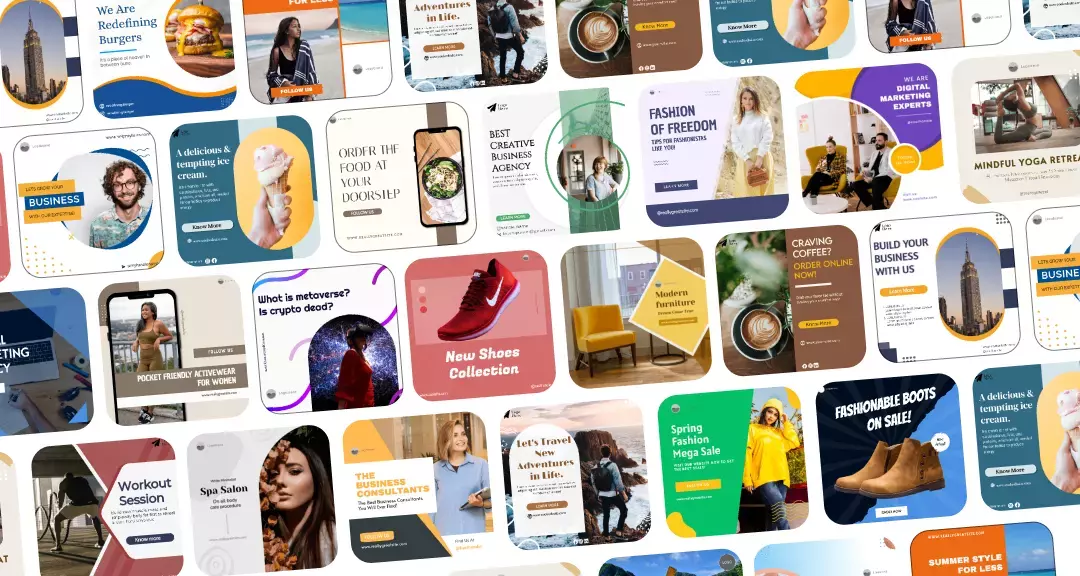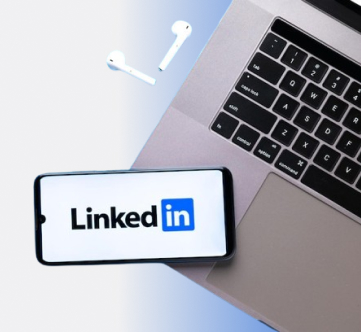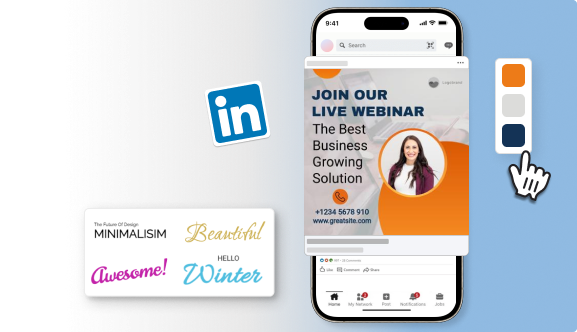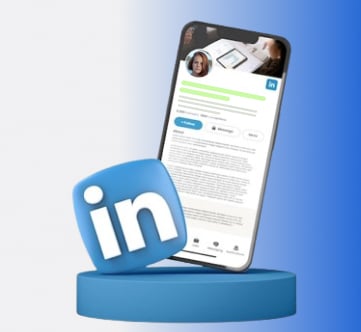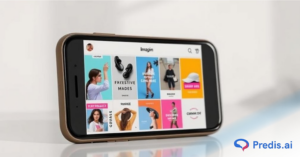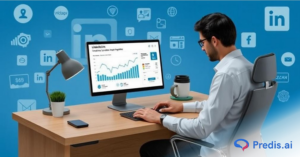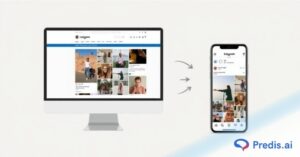LinkedIn isn’t just a networking site anymore — it’s the #1 B2B lead generation platform, used by 96% of B2B marketers for content distribution and trusted by decision-makers across industries. With over 1 billion users and highly specific targeting options based on job titles, industries, and company size, it offers an unmatched environment for reaching high-value prospects.
But here’s the catch: running LinkedIn ads without a compelling lead magnet is like fishing without bait.
Traditional tactics, such as direct sales pitches or generic product promotions, often fall flat in this professional ecosystem. Today’s B2B buyers are skeptical, overwhelmed, and short on time. They need value-first content that earns their trust before they’ll hand over their contact details or book a sales call.
That’s where lead magnets in LinkedIn ad campaigns make all the difference.
A well-crafted lead magnet, such as a whitepaper, checklist, or exclusive webinar, acts as a powerful incentive, turning passive scrollers into qualified leads. When paired with LinkedIn’s precision targeting and lead gen forms, these magnets can dramatically reduce your cost per lead and accelerate the buyer journey.
In this guide, we’ll show you how to use lead magnets in LinkedIn ad campaigns strategically, so you can attract, engage, and convert your ideal B2B audience with confidence.
Why Lead Magnets Matter in LinkedIn Ad Campaigns?
LinkedIn has emerged as a B2B marketer’s goldmine not just for brand visibility but for targeted lead generation. What sets it apart? The platform is home to a high-intent, professional audience actively seeking industry insights, solutions, and opportunities to grow their business. Unlike other social media platforms where users scroll casually, LinkedIn users are often in a decision-making mindset, making them far more receptive to relevant offers.
But even with this advantage, a direct ad asking for a demo or meeting can easily be ignored, unless it’s paired with a compelling reason to engage. That’s where lead magnets in LinkedIn ad campaigns prove essential.
The Psychology of Value Exchange
In a digital environment flooded with noise, attention is a currency. If you want someone to give up their name, email, or job title, you need to offer something of real value in return. This is known as the value exchange, and it’s a fundamental principle behind every successful lead generation strategy.
A strong lead magnet taps into your audience’s pain points or goals and offers a quick win or exclusive insight, whether that’s a checklist, industry report, free tool, or webinar. On LinkedIn, where decision-makers are looking to stay ahead of trends and optimize their business, this kind of value-driven content can be irresistible.
B2B Buyers Want Solutions — Not Sales Pitches
Gone are the days when cold outreach and hard sells ruled B2B marketing. Today’s buyers do their research. Most prefer to engage with educational, solution-oriented content before speaking to a sales team. LinkedIn lead magnets meet this expectation perfectly — offering helpful resources in exchange for contact info, and creating a low-friction entry point into your sales funnel.
Whether you’re targeting CMOs, HR heads, or IT managers, lead magnets in LinkedIn ad campaigns allow you to build trust, showcase expertise, and collect qualified leads — all while respecting your audience’s time and intelligence.
Types of Lead Magnets That Work Best on LinkedIn
Not all content performs equally when it comes to lead magnets in LinkedIn ad campaigns. The most effective magnets are those that meet your audience where they are in their decision-making process, offering real value that aligns with their current needs. Below are the top-performing lead magnet formats on LinkedIn, along with when and how to use them.
1. Ebooks, Whitepapers, and Industry Reports
These long-form, insight-rich resources are ideal for top-of-funnel awareness. They position your brand as a thought leader while educating your audience on industry trends, challenges, and solutions. These lead magnets work well when your goal is to build trust and authority with a professional, research-oriented audience, especially in sectors like tech, finance, healthcare, and consulting. They’re also an effective way to highlight and capitalize on emerging lead generation trends, ensuring your content stays timely and relevant.

Example:
“The 2025 State of B2B Marketing Report” or “Cybersecurity Trends CEOs Can’t Ignore.”
2. Webinars and Live Event Registrations
Webinars are perfect for mid-funnel engagement, offering a more interactive and value-packed experience. They allow potential leads to connect with your brand in real-time, ask questions, and see your expertise in action. Promoting webinars via LinkedIn ads can also boost attendance from highly targeted job roles and industries.

Pro Tip:
Use LinkedIn Lead Gen Forms to simplify the registration process directly within the platform.
3. Checklists, Templates, and Toolkits
These actionable resources are highly attractive to busy professionals looking for quick wins. Whether it’s a “LinkedIn Ad Campaign Setup Checklist” or a “Social Media Content Calendar Template”, these formats are easy to consume and deliver immediate utility. They work especially well for audiences who are solution-aware and actively researching execution tactics.
4. Free Trials, Product Demos, or Consultations
When you’re targeting bottom-of-funnel leads who are closer to making a purchase decision, offering a free trial, personalized demo, or consultation can be the most persuasive magnet. These offers reduce commitment friction and allow prospects to experience your product or service firsthand.

Best for:
SaaS tools, tech platforms, marketing services, and B2B consultants.
Use Case: Matching Lead Magnets to Buyer Journey Stages
| Buyer Journey Stage | Best Lead Magnet Type |
| Awareness | Ebooks, whitepapers, industry reports |
| Consideration | Webinars, templates, toolkits, case studies |
| Decision | Free trials, product demos, one-on-one consultations |
How to Strategically Align Lead Magnets with LinkedIn Ad Objectives?
To get the most out of your lead magnets in LinkedIn ad campaigns, you need more than just great content—you need the right strategy. That starts with choosing the appropriate campaign objective, optimizing your lead capture method, and removing any barriers to conversion.
Choosing the Right Campaign Objective
LinkedIn offers several ad objectives, but not all are ideal for lead generation. Here’s how to choose:
- Lead Generation:
Best suited for promoting downloadable resources like ebooks, webinars, or free trials using LinkedIn Lead Gen Forms. This objective allows users to submit their information directly within the LinkedIn interface, creating a frictionless experience. - Website Visits:
Use this when your lead magnet requires users to engage with content hosted on your website, like a toolkit or interactive calculator. This works well when your landing page is designed for high conversion and supports deeper brand storytelling. - Engagement:
Ideal for building awareness and warming up your audience. Promote lead magnet-related content like carousel posts or educational videos that introduce the value of the resource before pushing a download or form fill.
When to Use LinkedIn Lead Gen Forms vs. Landing Pages?
Both options have their place in a successful campaign. Here’s when to use each:
- Use LinkedIn Lead Gen Forms when:
- You want a mobile-optimized, low-friction experience
- Your audience may hesitate to click off-platform
- You’re offering a simple lead magnet (e.g., ebook, checklist, webinar registration)
- You need higher volume with lower CPL (cost per lead)
- You want a mobile-optimized, low-friction experience
- Use Landing Pages when:
- Your lead magnet needs context or storytelling before conversion
- You want to segment traffic, track behavior, or upsell additional offers
- You’re using custom CRM workflows or need complex form logic
- Your lead magnet needs context or storytelling before conversion
Tips to Increase Form Conversions Without Friction
- Keep fields minimal. Ask only for what you need: name, email, company name, and role are usually sufficient.
- Pre-fill where possible. LinkedIn automatically populates fields based on user profile data—use this feature to your advantage.
- Craft a benefit-first headline. Don’t just say “Download Our Guide”—say “Get the 7-Step LinkedIn Ad Checklist Trusted by B2B Marketers.”
- Add a short description. Use 1–2 lines to reinforce the value of your lead magnet. Focus on what the user will gain.
- Follow up fast. Connect your forms to your CRM or email automation to send the lead magnet instantly and start nurturing.
Targeting the Right Audience for Your Lead Magnets in LinkedIn Ad Campaigns
Even the most valuable lead magnet will fall flat if it’s shown to the wrong people. Success with lead magnets in LinkedIn ad campaigns depends heavily on precision targeting, and LinkedIn’s audience filters are designed specifically for that.
Build Hyper-Specific Audiences Using LinkedIn’s Native Filters
One of LinkedIn’s biggest strengths is its professional-grade targeting capabilities. You can zero in on exactly who you want to reach based on real user data, not behavioral assumptions.
Top filters to use:
- Job Title & Function: Target roles most likely to benefit from your lead magnet. For example, a B2B marketing toolkit might be ideal for “Marketing Managers” or “Demand Generation Leads.”
- Industry & Company Size: Tailor your offer to specific verticals (e.g., SaaS, Finance, Healthcare) and company scales (e.g., SMB vs. Enterprise).
- Seniority & Job Experience: Want decision-makers? Filter for “Director,” “VP,” or “C-level” roles. Need hands-on users? Go for “Mid-Senior” professionals.
Use Retargeting to Capture Warm Leads
Not everyone converts on first touch. That’s why retargeting is essential in LinkedIn ad campaigns, especially when nurturing interest in a lead magnet.
You can retarget based on:
- Video views (e.g., watched 25%+ of a lead magnet promo video)
- Ad engagement (likes, comments, or clicks)
- Landing page visits (via LinkedIn Insight Tag)
Once someone interacts with your brand, follow up with a relevant lead magnet that addresses their stage in the funnel, such as a webinar invite for someone who read a blog or an advanced toolkit for repeat page visitors.
Leverage Lookalike and Matched Audiences
To scale your lead magnets in LinkedIn ad campaigns efficiently, use:
- Matched Audiences: Upload lists from your CRM, newsletter subscribers, or webinar attendees. LinkedIn will match these with their profiles for hyper-targeted ads.
- Lookalike Audiences: LinkedIn analyzes your matched audience and finds new users with similar attributes, helping you reach fresh but relevant prospects.
Create Stunning LinkedIn Posts Effortlessly with Predis.ai
Want scroll-stopping LinkedIn content without spending hours brainstorming and designing? Predis.ai helps you generate, design, and schedule high-converting LinkedIn posts using AI-powered automation. From carousel posts to promotional visuals, you can transform your lead magnet content into attention-grabbing creatives that align perfectly with your campaign goals.

Key features:
- AI-generated post captions and hashtags
- Branded, visually engaging graphics
- Carousel post creation for storytelling
- Integration with LinkedIn for direct publishing
Use Predis.ai to keep your audience engaged and amplify the visibility of your lead magnets with professional-quality content — no design skills needed.
Final Thoughts
In today’s competitive B2B landscape, lead magnets in LinkedIn ad campaigns are no longer optional, they’re essential. When executed strategically, they can transform casual scrollers into qualified leads by delivering real value in exchange for attention and contact information.
Let’s quickly recap what we covered:
- Why lead magnets matter — LinkedIn’s high-intent audience responds best to content that solves problems, not pushes sales.
- Types that work — From ebooks to webinars to free trials, the best lead magnets match your Strategic alignment — Choosing the right campaign objective and using Lead Gen Forms or landing pages can make or break your results.
- Targeting for success — Hyper-specific audience filters, retargeting strategies, and lookalike audiences drive more relevant leads at scale.
